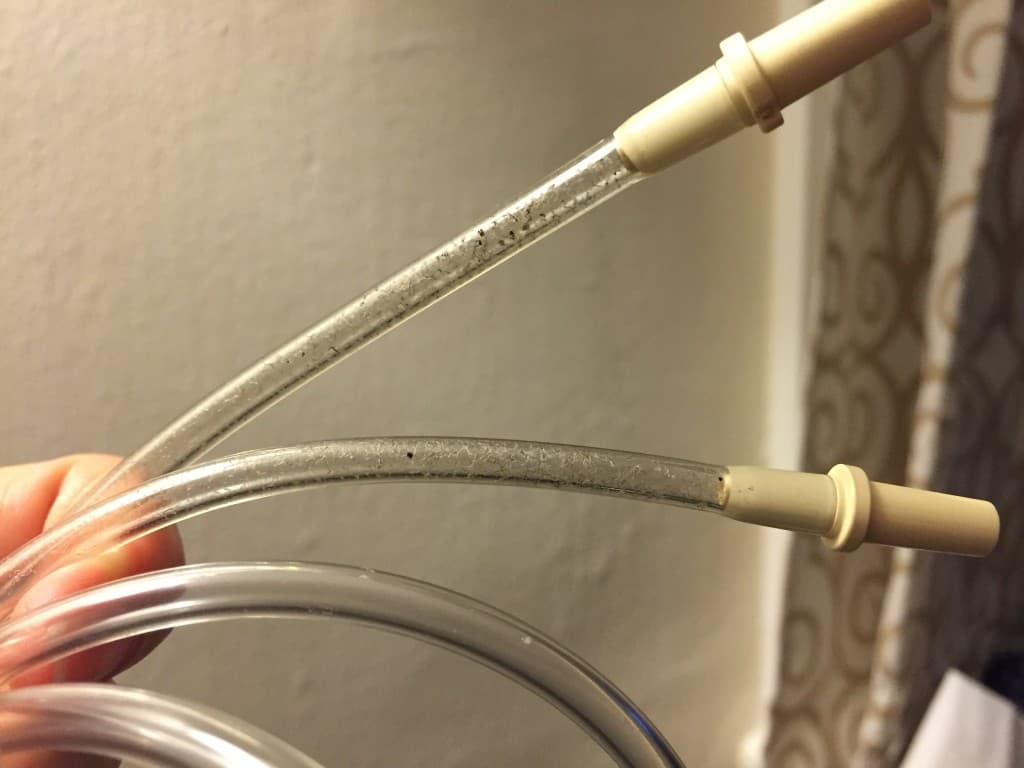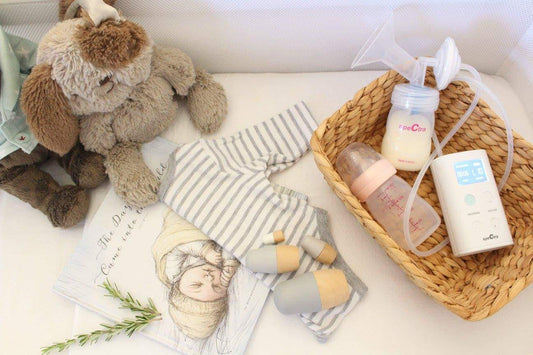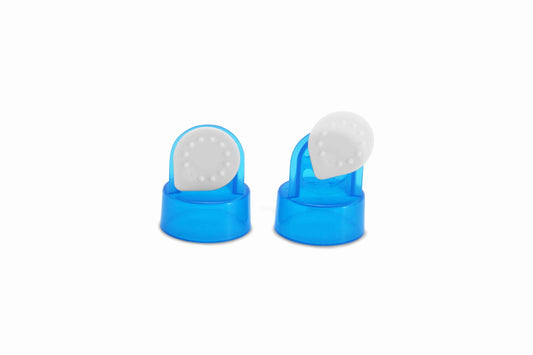Buy a closed system breast pump
It's important to know the difference between closed system and open system when you're buying a breast pump. Closed system breast pumps, like all Spectra breast pumps, have a barrier between the parts that touch your breastmilk, and the tubing and pump motor. This is called the backflow protector, and it's that little UFO-shaped piece that goes on the top of the breastshield and attaches to the tubing (or, it's a backflow filter if you have a Dew 350). Other breast pump brands have different styles of backflow protectors, but the important part is that they keep your milk collection part sectioned off from the rest of the pump. Specifically, the parts that can easily be cleaned and sterilised are cut off from the parts that cannot be cleaned and sterilised, like the interior of the pump motor. This is why hospital grade breast pumps are safe for multiple users - because they have this barrier.

The Spectra S1 Hospital Grade Double Electric Breast Pump is a closed system breast pump.
There are still some open system breast pumps on the market, like the Medela Pump in Style Advanced. These breast pumps do not have barriers between the parts that touch your breastmilk and the tubing and pump motor, thus moisture from pumping can enter the tubing and motor. Mould flourishes in dark, moist places, which is why you'll find it in your refrigerator every so often. Impossible-to-clean places like the interior of a breast pump motor are very inviting to mould. Do not buy used open system breast pumps! Open system pumps are absolutely for single use only, and not meant to last for years. This is especially important if you're buying a used breast pump because there's no way to properly clean it between users. Even if you can't see the mould, it doesn't mean it isn't there - mould spores are microscopic. If you're purchasing a used breast pump, verify with the manufacturer whether the breast pump is open system or closed system first.
Always use your backflow protectors to avoid mould in breast pump tubing
There are some things in pumping that we don't always keep up with, but using the backflow protectors with your Spectra breast pump is something you absolutely cannot skip. The backflow protector is the heart and soul of your breast pump. It protects your pump motor from mould and moisture, and keeps your liquid gold safely contained within a clean and sterile area. Not only does using the backflow protector keep you safe from mould buildup, but it's also an important part of how your breast pump works. Not using the backflow protector will impact suction, causing the valves to wear down more quickly - or worse, impact your milk supply. You should always use your backflow protector when pumping, and if you're relying on your breast pump to feed your baby, consider carrying a spare set with your pump just in case. If a backflow protector breaks or fails, it's better to single-pump than to risk double-pumping.
If you're washing your backflow protectors, make sure you completely disassemble them when washing, and allow them to completely air dry prior to putting them back together.
Replace backflow protectors regularly to keep mould out of your breast pump
It's important to know when to replace your breast pump parts, especially the silicone parts as their elasticity wears down over time. With the elasticity wearing down, suction decreases which means your pump motor will have to work extra hard to maintain the same level of suction. It's especially important to regularly replace the backflow protectors because as the white membranes wear down and lose elasticity, they can also lose their seal making your tubing and pump motor vulnerable to moisture. If you hear a squishy sound from your backflow protector while pumping, stop and inspect it for tears, thinning of the membrane and moisture - especially on the tubing side of its interior membrane. You should make sure that your backflow protector is assembled only after it's had time to completely air dry. Never use a torn or worn down backflow protector. You should plan on replacing your backflow protectors every 6 months if you're pumping daily, and ever 3 months if you're exclusively expressing or pumping 4 or more times per day.Make sure breast pump parts are completely dry prior to assembly
This is especially important for the backflow protectors, but you should make sure that all your pump parts have had time to completely air dry prior to assembling them. You don't want mould spores grow in the nooks and crannies of your milk collection kits, and it can happen fairly easily if they are assembled wet, even with the smallest amount of moisture, and stored in a dark, air-tight environment (like in a snaplock bag or plastic box over the weekend).

Make sure you completely disassemble your breast pump parts prior to washing to prevent mould and grime from building up.[/caption] This is why it's also important to fully disassemble your pump parts while you're washing them, so they can completely air dry. If membranes are left attached to valves, or valves left on breastshields, there's no way for them to completely air dry. Make sure when you wash your pump parts, you remove your valves from the underside of your breastshields, remove your membranes from your valves, and take apart and remove the membrane from your backflow protectors. Not doing so will trap moisture and grime (and soap!) in your milk collection kit, inviting mould to grow.
Keep mould out of your breast pump by keeping the tubing dry
Don't get the tubing wet. Do not wash the tubing and do not sterilise the tubing. Proper use of your backflow protectors will prevent milk and moisture from entering the tubing, but should that ever fail, please just replace the tubing. There's no way to completely clean out any residue left from the milk. Again, don't get the tubing wet! This is super important because any amount of moisture in the tubing will get sucked into your pump motor as soon as you turn it on.




